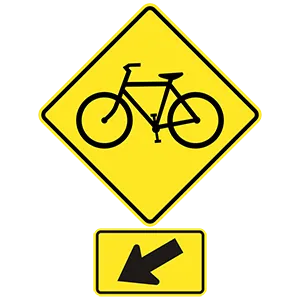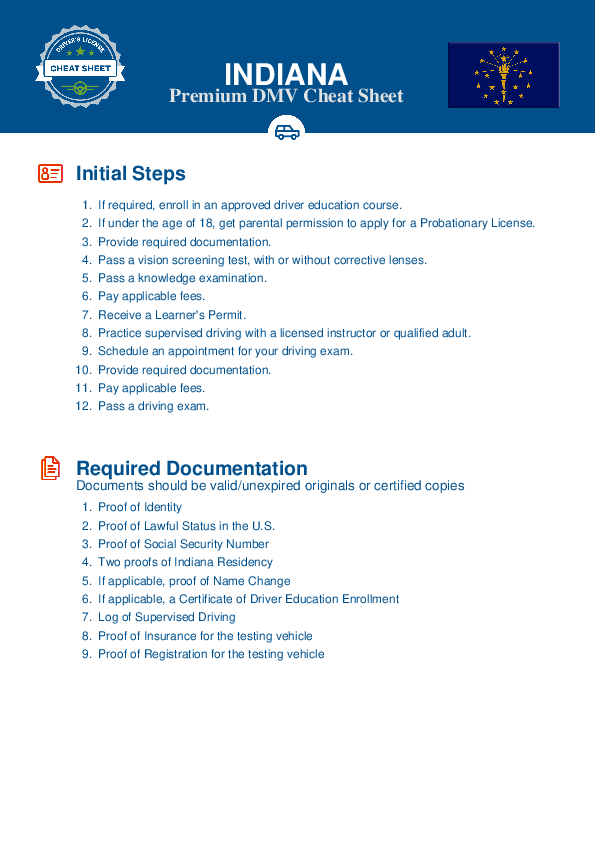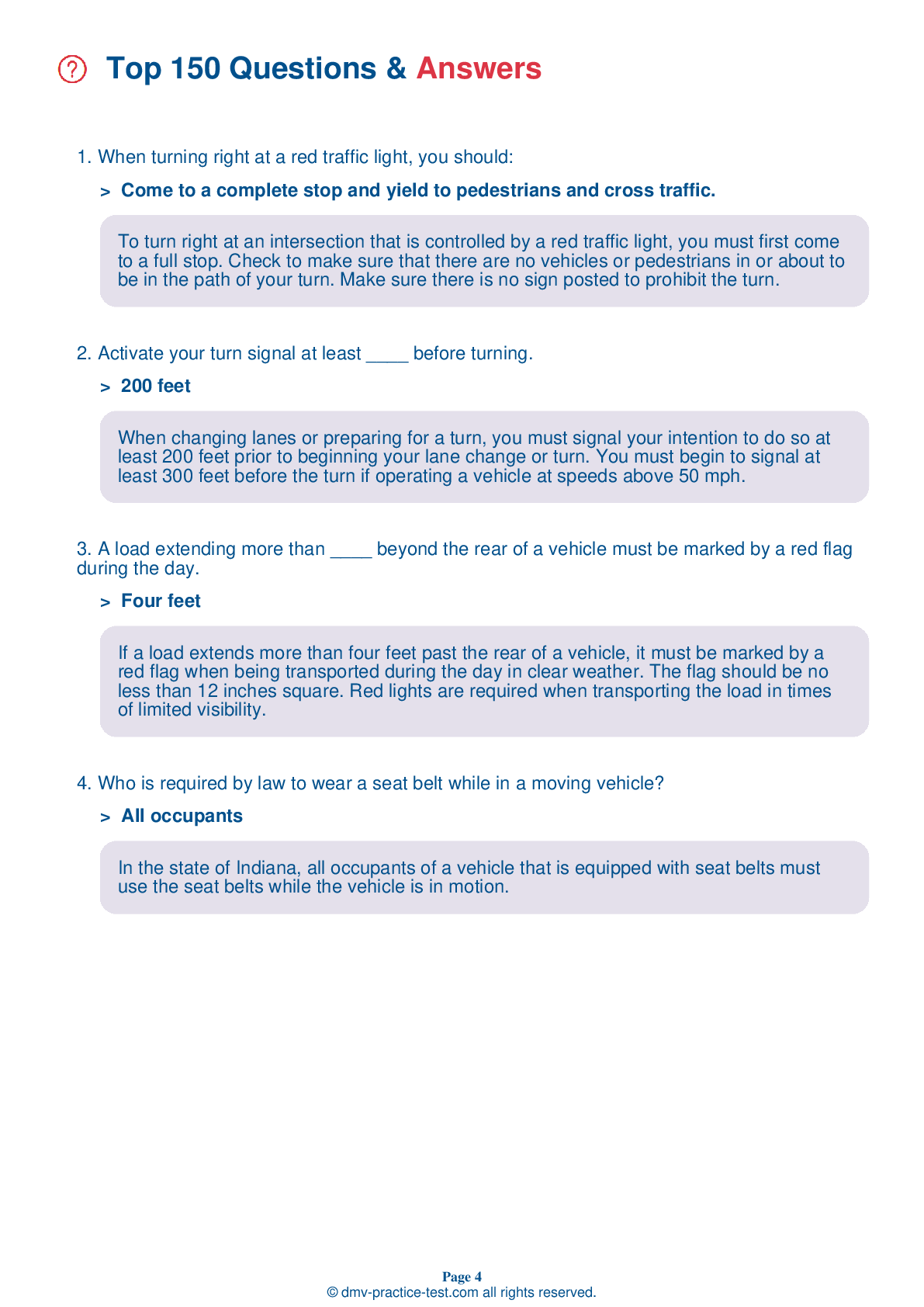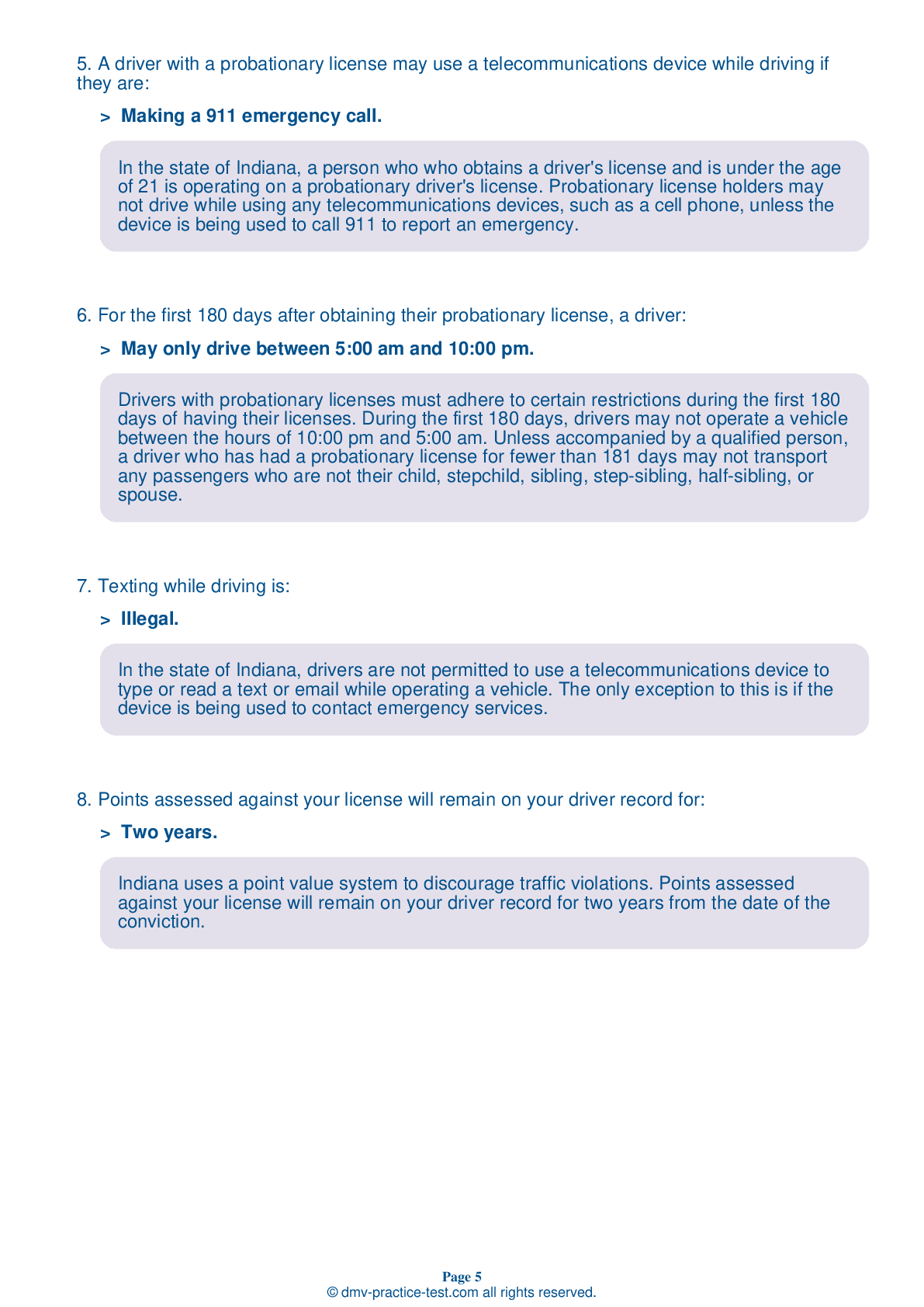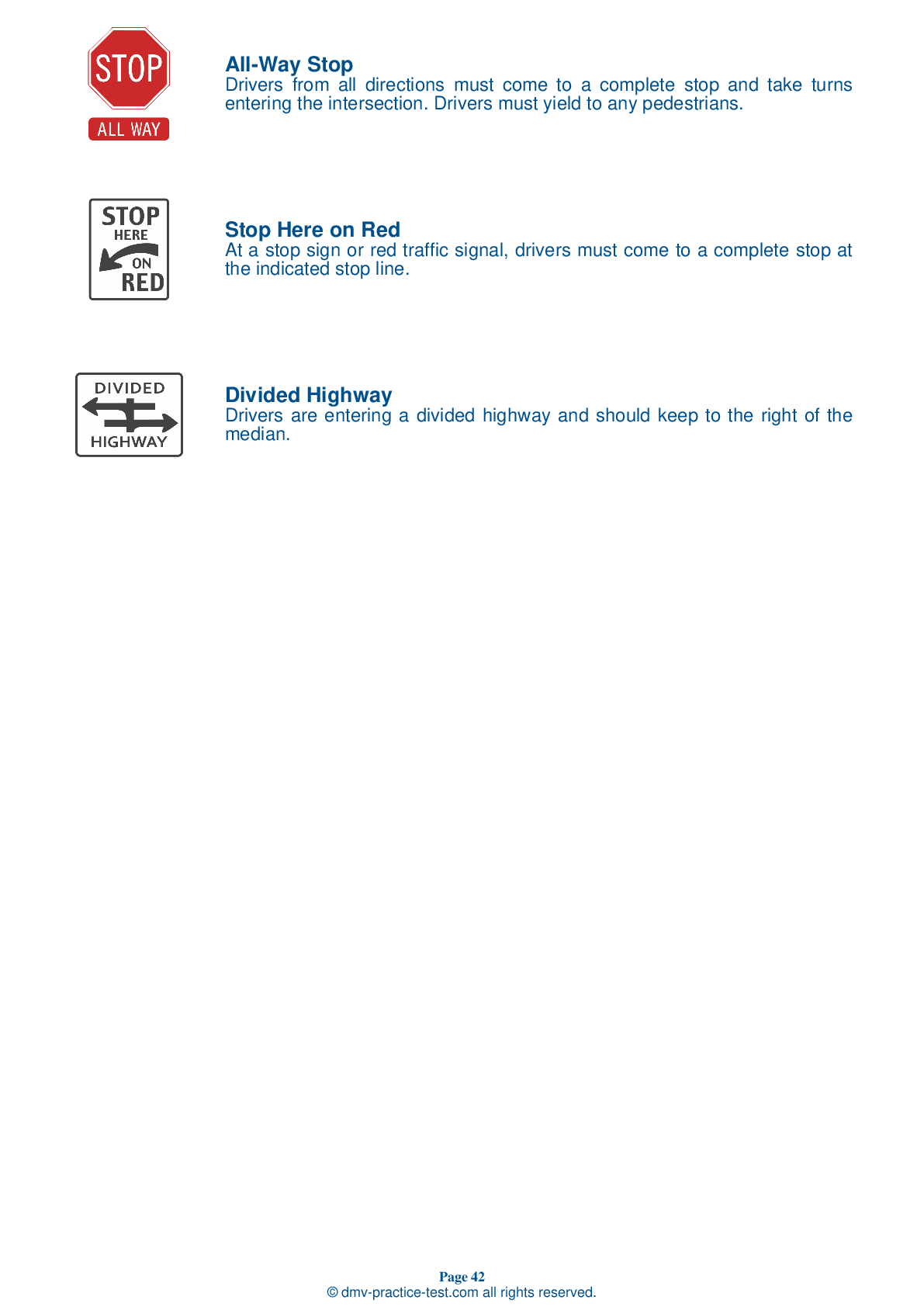FREE Indiana DMV Practice Test #5 Page 3 of 5
This set of Indiana DMV practise tests has been updated for January 2025. It includes questions based on the Indiana Driver Handbook's most significant traffic signals and laws for 2025. Use actual questions that are very similar (often identical!) to the DMV driving permit test and driver's licence exam to study for the DMV driving permit test and driver's licence exam.
On the practise exam, each question gets a tip and explanation to help you remember the concepts. The written component of the official Indiana DMV test will include questions about traffic rules, traffic signs, and driving statutes, as well as information from the Driver Handbook.
To obtain a passing grade, you must correctly answer 44 of the 50 questions. Take our DMV practise exam to help you prepare for your Indiana instruction permit or driver's licence.
The DMV exam is available in several languages.
Using any kind of testing assistance will result in an automatic fail, and the DMV may take additional action against your driver's licence, so stay away from it.
17 . To enter a freeway:
When merging into traffic, you should signal and enter at the same speed that traffic is moving. Always yield to other traffic when entering a roadway.
18 . This sign means:

This sign indicates that the road that you are on intersects with a divided highway. A divided highway is two one-way roadways separated by a median or guide rail.
19 . Traffic signals sometimes display arrows to control turns from specific lanes. A green arrow:
A green arrow has the same meaning as a circular green traffic light, but traffic in the indicated lane must turn in the direction shown by the arrow.
20 . This road sign means:
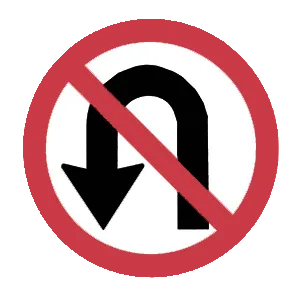
This signs indicate that U-turns are prohibited in the location where it is posted.
21 . The posted speed limit shows:

A speed limit sign shows the maximum legal driving speed for the stretch of highway where it is posted. Driving safely may require you to travel more slowly than the posted limit. When conditions are less than ideal, drivers should slow down.
22 . If you are driving so slowly that traffic is backing up behind you, you should:
Driving more slowly than the flow of traffic can be hazardous. If you are on a two-lane, two-way road and driving so slowly that traffic is backing up behind you, you are required to pull off the road and let the other vehicles pass. Only drive significantly under the speed limit when conditions require it.
23 . When two vehicles arrive to an intersection at the same time, which one has the right-of-way when no signs or signals indicate rules?
At an intersection of two similar roads without a traffic control device, a driver must yield to a vehicle approaching from the right.
24 . A leaky exhaust system in your vehicle is dangerous because it can cause:
The exhaust system carries exhaust gas out of the vehicle and prevents fumes from entering into the passenger compartment. To prevent carbon monoxide poisoning, keep your exhaust system free of leaks. Replace all defective parts immediately.
25 . When passing on a multilane highway:
Before passing, you must make sure the passing lane is clear and give the proper turn signal to show you are going to change lanes.
26 . This road sign means:
